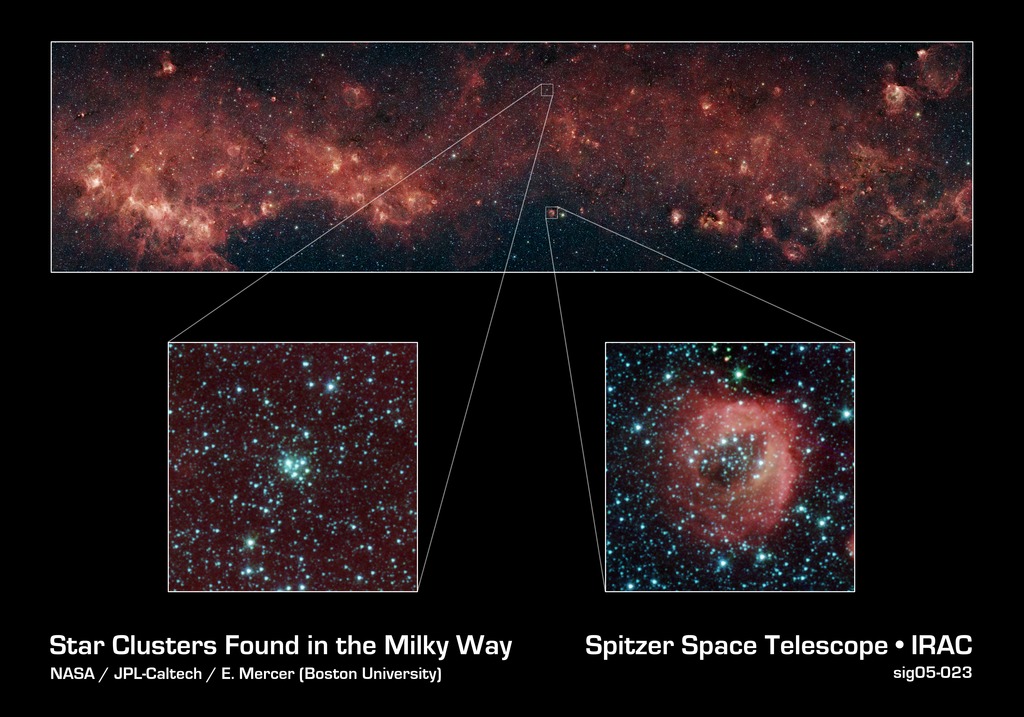
Credit: NASA/JPL-Caltech/E. Mercer (Boston University)
Observation • December 12th, 2005 • sig05-023
sig05-023
A metropolis of stellar activity is captured in these images taken by the Galactic Legacy Infrared Mid-Plane Survey Extraordinaire (GLIMPSE) Legacy project.
The panoramic image composite (top) captures 8 degrees of our Milky Way galaxy's plane (approximately the width of a fist held up to the sky at arm's length). The red dust clouds have been illuminated by nearby star formation, and indicate the presence of large organic molecules mixed in with the dust. The patches of black are dense, obscuring dust clouds impenetrable by even Spitzer's super-sensitive infrared eyes. Bright arcs of white throughout the image are massive stellar incubators.
Tucked away in this stretch of sky are two newly discovered star clusters (bottom). These were identified using an automatic cluster-finding computer program developed by astronomers at Boston University, Mass. This software can systematically search huge areas of sky to find star groupings difficult to find by eye.
The two bottom images show these very different clusters in greater detail. One is an isolated, tight grouping of older stars (left). The other shows a looser cluster situated within a wispy red ring (right). The red doughnut-shaped cloud glows from the starlight in this cluster.
The many other blue dots spread across the images are older stars located at a variety of distances along this line of sight, many positioned deep in the heart of our Milky Way. The new software helps astronomers separate out these field stars from the ones within the clusters.
The infrared image was captured with the Spitzer's infrared array camera (IRAC). The picture is a 4-channel color composite, showing emission from wavelengths of 3.6 microns (blue), 4.5 microns (green), 5.8 microns (orange), and 8.0 microns (red).
About the Object
- Name
- Milky Way • Galactic Plane
- Type
- Star > Grouping
- Nebula > Type > Star Formation
Color Mapping
| Band | Wavelength | Telescope |
| Infrared | 3.6 µm | Spitzer IRAC |
| Infrared | 4.5 µm | Spitzer IRAC |
| Infrared | 5.8 µm | Spitzer IRAC |
| Infrared | 8.0 µm | Spitzer IRAC |



